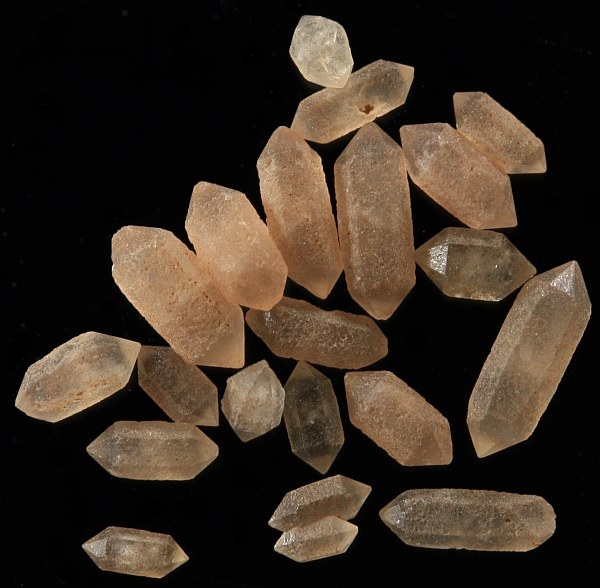Quartz grains in sand may be rounded or angular but they show their crystal faces extremely rarely. There are two good reasons for that.
Quartz is a tough mineral. It is resistant to both physical and chemical attack. But as millions of years pass they eventually obtain more and more rounded shape. Many quartz grains we encounter in beaches or desert dunes may be very old and their crystal faces, if they had them, are long gone.
But there is another and even better explanation. Most quartz grains never existed as beautiful crystals. Quartz is primarily an igneous mineral — it crystallizes out of magma. If the magma body cools, crystals start to form. Most of these crystals belong to the silicate minerals — they contain silicon and oxygen.
First silicates that start to crystallize take in addition to silicon and oxygen other elements such as iron, magnesium, and calcium into their crystal structure. If all these elements are removed from the melt and there is still silicon and oxygen available (it happens in most cases), then the rest crystallizes as pure silicon dioxide which is a mineral we call quartz. Therefore, quartz is among the last minerals to form in a cooling magma body and it has to take the space which is still available between the crystals that have already formed. This space is obviously irregular and provides no opportunity for the crystals to grow as they would like.
But sometimes quartz forms crystals with well developed faces. How is it possible? It can happen if the quartz crystals form in a vug — a crack or fracture in the rocks. It crystallizes out of water that circulates in such cracks. In this case there is nothing to stop quartz crystals to grow just like they want to as long as there is free room to do that.
Quartz from these vugs will be liberated as sand grains when the weathering reaches their host rocks. It should be obvious now that such quartz crystals are very rare in sand. There are some other environments where quartz crystals grow but none of them is a significant source. Below you can see one of these samples. These euhedral (with well developed crystal faces) quartz crystals grew in a gypsum deposit in New Mexico, USA. They are known as the “Pecos diamonds”.

Crystals of quartz (the Pecos diamonds) picked from a coarse-grained sand that comes from a gypsum deposit in New Mexico, USA. The width of the view is 15 mm.
Leave a Reply